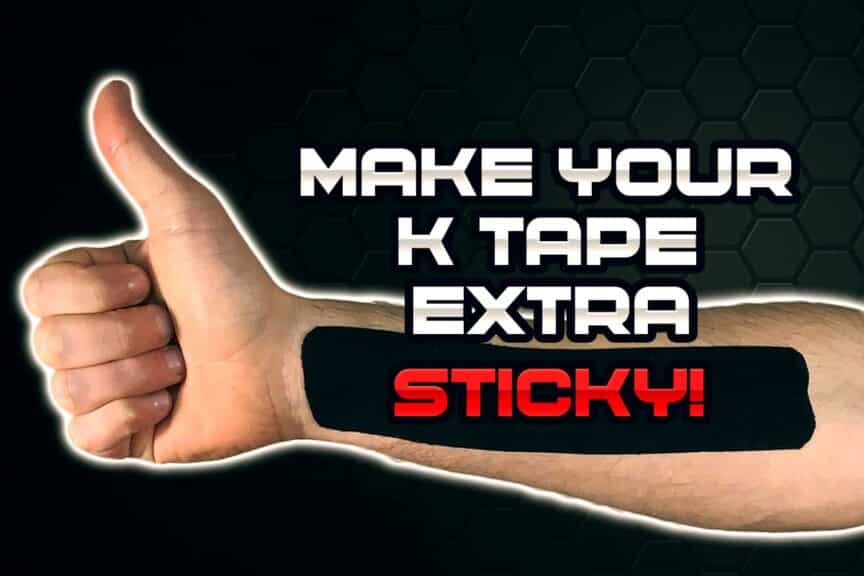Kinesio tape can be great for reducing pain and discomfort while also helping to expedite recovery from sore muscles and tissues. Perhaps that’s why when it comes to using Kinesio tape, few things are more annoying than having the tape not stick well. Thankfully, there are some rather easy, yet incredibly effective ways you can make your tape stick better in order to get the most out of its benefits.
Making Kinesio tape stick much more effectively can be done by making a few changes to your taping technique itself, preparing your skin for the tape in a few key ways and/or using some extra products that will help anchor down the tape to your skin.
If you’d like to learn the specifics of how to make your tape stick better (and just how easy it actually is), be sure to keep on reading as I will go through all of these techniques. You can try just one of them, a few of them or even ALL of them simultaneously (if you need some of the stickiest tape you could ever imagine).
ARTICLE OVERVIEW (Quick links)
Click on any of the tips below if you want to instantly jump to that particular section.
• It all starts with good skin preparation techniques
– Ensuring clean, dry skin
– Buzzing down or shaving the skin surface
• Making Changes to your taping techniques
– Using longer strips of tape
– Being mindful of where your tape ends
• Getting extra sticky with extra products
– Spraying on Tuf Skin
– Using extra sticky Kinesio tape
– Using hypafix to anchor tape better
Related Article: How to Remove ANY Sports Tape Without Pain | Easy & Effective Tips
It all starts with good skin preparation techniques
Just like a structurally sound house must be built on a solid foundation, the successful application of Kinesio tape starts with laying it on a surface that offers maximal adhesion. While there are plenty of other tips covered within this article that will help with getting your tape to stick better, you’ll always stand the best chance possible with those particular tips by making sure your skin is providing the best surface possible for sticking to the tape.
Ensuring clean, dry skin
Applying tape to dirty, oily and/or moist skin is a surefire way to have your tape lift off from your skin rather quickly. It may sound like common sense, but clean, dry skin should really be a universal step to take whenever and wherever you’re applying your tape.
If your skin is dirty or sweaty, give it a gentle cleaning with a product of your choice then make sure it’s fully dried before proceeding.
Buzzing down or shaving the skin surface
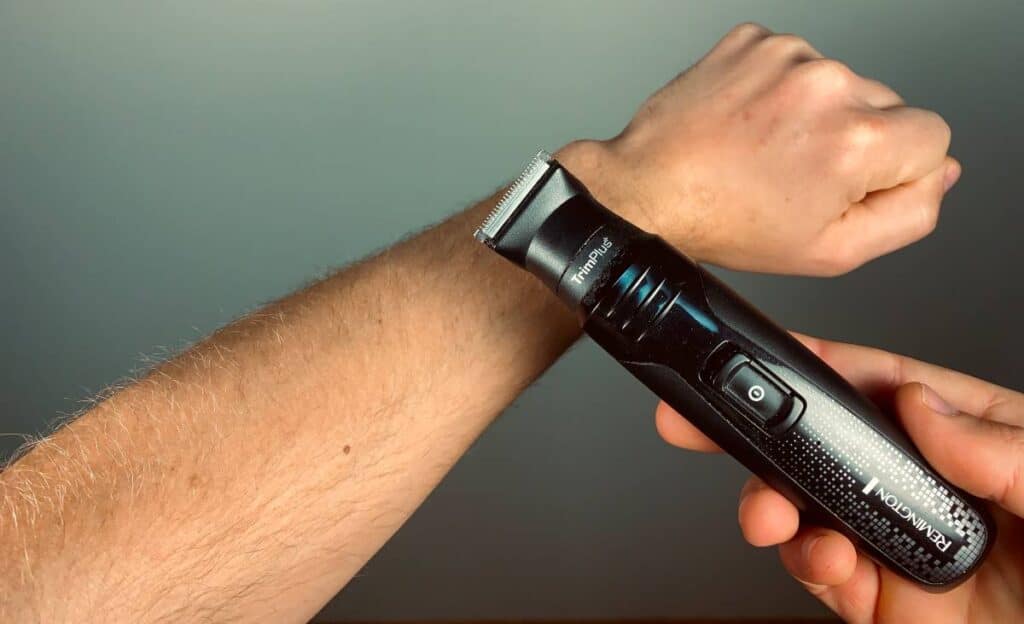
Tape has a hard time sticking to your skin when all the adhesive is grabbing your hair. While it may not be desirable, you might want to consider either buzzing down or shaving the area that needs taping. Thankfully, certain areas of the body such as shoulders and back typically don’t have a lot of hair. Other commonly taped areas, however, such as legs and arms might.
Even the stickiest tape can’t stick to your skin when there’s a layer of hair in the way. And Kinesio tape needs to stick to skin in order to provide some of its therapeutic effects, and those effects don’t happen if it’s stuck to your hair. Thankfully, hair grows back.
Making Changes to your taping techniques
One of the best things you can do if you’re not interested in using some additional products to really anchor down your tape is to simply make some changes to your taping techniques. Thankfully, successful Kinesio taping for pain and injuries is not dependent on one single, precise way or pattern of laying down tape.
The fact of the matter is that taping is half science and half art. Don’t be afraid to make certain changes to your taping.
The changes I describe below can help to ensure your tape sticks better without compromising its effect on decreasing your pain and improving the speed of your recovery.
Using longer strips of tape
A great step to take for some extra assurance that your tape will stick better is to simply apply longer strips of tape. So long as you lay the tape down in the same fashion and over the same area, it won’t change the therapeutic effectiveness of the tape. What it will do is simply allow a greater surface area of contact between the tape and the skin, which will add reinforcement to the tape staying on the skin as you produce all sorts of physical movement throughout your sport or daily activities.
Some tape comes in pre-cut lengths, and while there can be times where this is helpful and handy, I’m personally always in favor of using tape that isn’t pre-cut, allowing me to determine the exact length that I need (either for myself or my patients)
Being mindful of where your tape ends
One particular thing you want to avoid when it comes to laying down your tape is making sure that your tape doesn’t end right over or very near a joint. The more range of motion the joint has, the more you want to avoid having your tape end on or near the joint.
With joints such as the knee and elbow, you’re likely to find that the end of your tape will peel up super quick if it ends on or near the skin crease of the joint. This is where lengthening out your tape strips can really help. Having the tape end on an area of your skin in which there is little movement underneath (i.e. further away from a joint) will help the end of the tape to have a better chance at sticking down without peeling up.
Don’t worry too much about joints along the spine or the back; these joints don’t move as much and tape usually sticks rather well in these areas anyway.
Getting extra sticky with extra products
If you’re looking to get serious with going all-out on anchoring your tape down onto your skin, this is where things will get quite sticky (in a good way). In addition to using the following steps, make sure you still execute the first two steps as well (i.e. apply your tape to clean skin and lay down the tape in slightly longer strips that don’t end right near a joint).
Spraying on Tuf Skin
You’ll always want to clean and dry your skin, but if you’re going all-out for stickiness, using some Tuf Skin (link takes you to Amazon) will be a game-changer. Tuf skin is an adhesive spray that makes your skin rather sticky. Think of it like putting your tape on steroids. There are also other brands that do the same thing, such as Mueller Pre-Tape Spray. I personally haven’t used the latter before, however, I’ve been using Tuf skin ever since high school, back in the early 2000s and it’s always done a great job for me.
Please note: Any Amazon links in this article are affiliate links. I earn a very small commission if you choose to purchase through them (no additional cost to you). I use these commissions to help offset the expenses I incur with running this website.
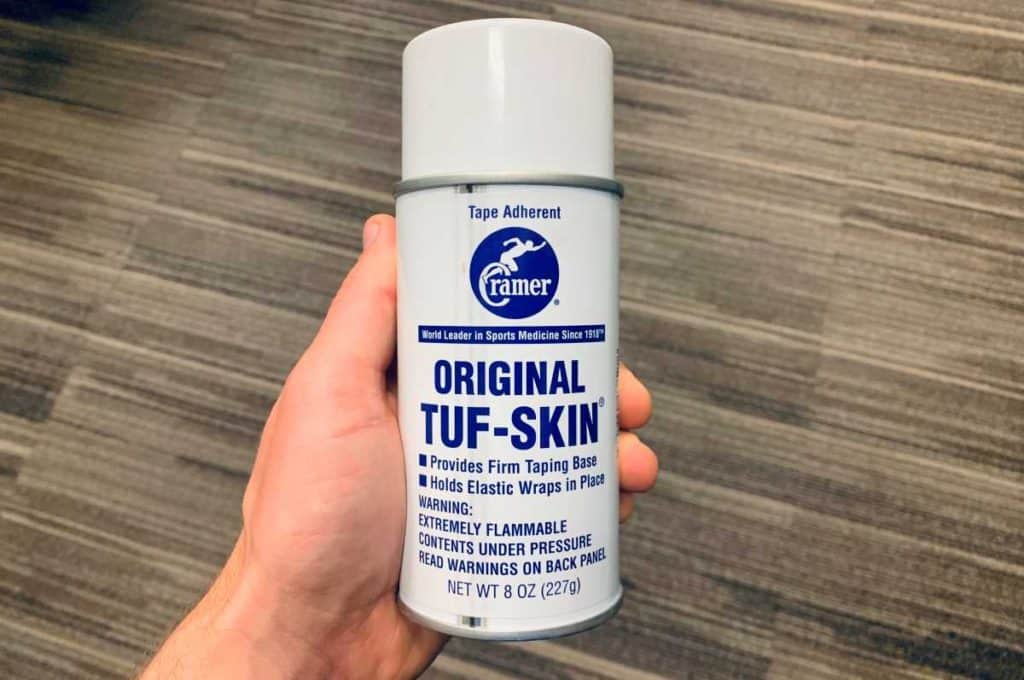
Some people recommend using hairspray, as it’s also an aerosol that is quite sticky. While it certainly does help the tape stick, in my own personal experience, Tuf Skin is much stickier. So, don’t be afraid to try hairspray if you have some sitting around, but if it doesn’t cut it for you, Tuf Skin likely will.
Using extra sticky Kinesio tape
Tape companies know that sometimes some extra “stick” is required. Thankfully they understand this and often have extra sticky rolls of tape for when the occasion calls for it.
Rocktape is a great example of this. Not only do they have extra-sticky tape, which they have designed for use in swimming pools, athletes who will be sweating profusely or undergoing high levels of physical movements. So if you want some extra reassurance that your tape will stick, this is the type of tape to grab.
There are many great brands of Kinesio tape out there, but Rocktape has been my personal favorite over the years. If you’re in need of some extra sticky tape, I’d personally spring for Rocktape’s highly water-resistant tape (link takes you to Amazon).
Using Hypafix to anchor tape better
This is my favorite technique to use when it comes to securing K-tape to your skin. It doesn’t seem to be an overly popular or well-known technique, but man, it really works. Hypafix, which is also known as Cover Roll is a cloth-based, hypoallergenic adhesive tape used for a variety of conditions. In the case of getting your Kinesio tape to anchor down onto your skin as best as possible.
If you’re in need of a roll, you can order some here (link takes you to Amazon). One roll is pretty inexpensive and will last you an incredibly long time if only using it to secure your Kinesio tape as described here.
Since Kinesio tape most often begins to peel off one’s skin from the ends, providing some extra reinforcement to anchor down those ends is a great step to take. This is what I often do when placing Kinesio tape on my patients who need some extra reinforcement for their tape from peeling up.
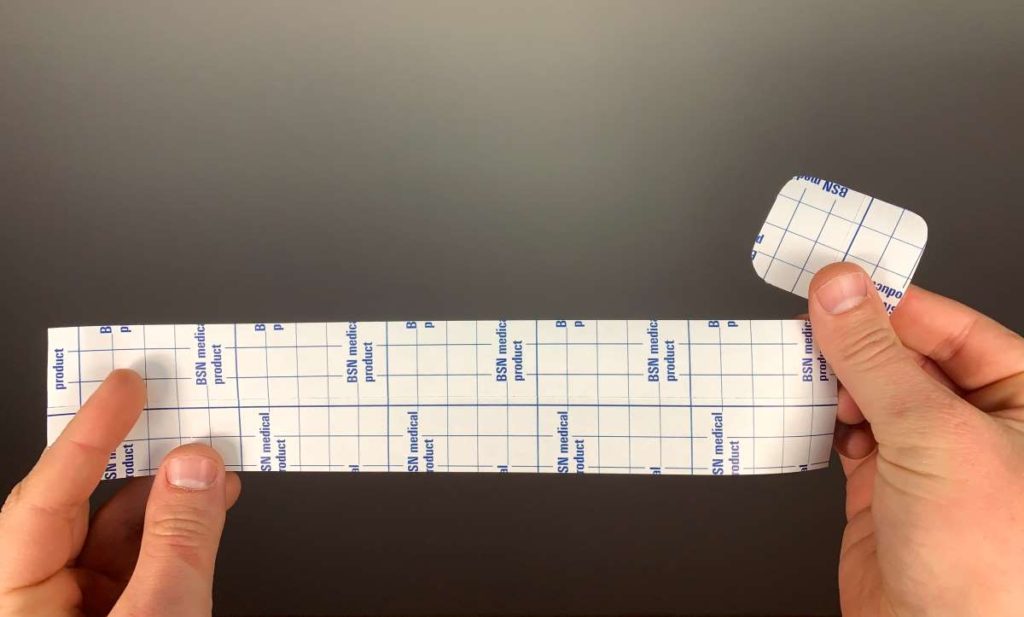
All you have to do is cut some small strips of Hypafix off the roll, round off the corners and lay each little Hypafix tab onto each strip of Kinesio tape; half the tab should go onto the Kinesio tape itself while the second half of the tab goes onto the skin. Make sure it’s firmly placed onto your skin by rubbing it for a couple of seconds. Congratulations, you now have some major reinforcement for preventing your tape from peeling up on the ends.
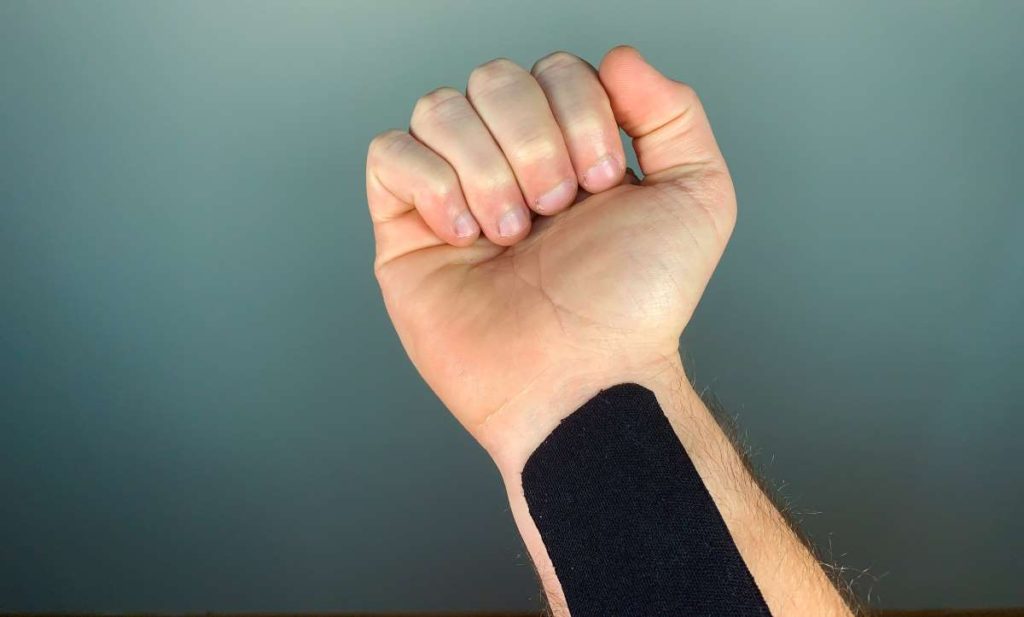
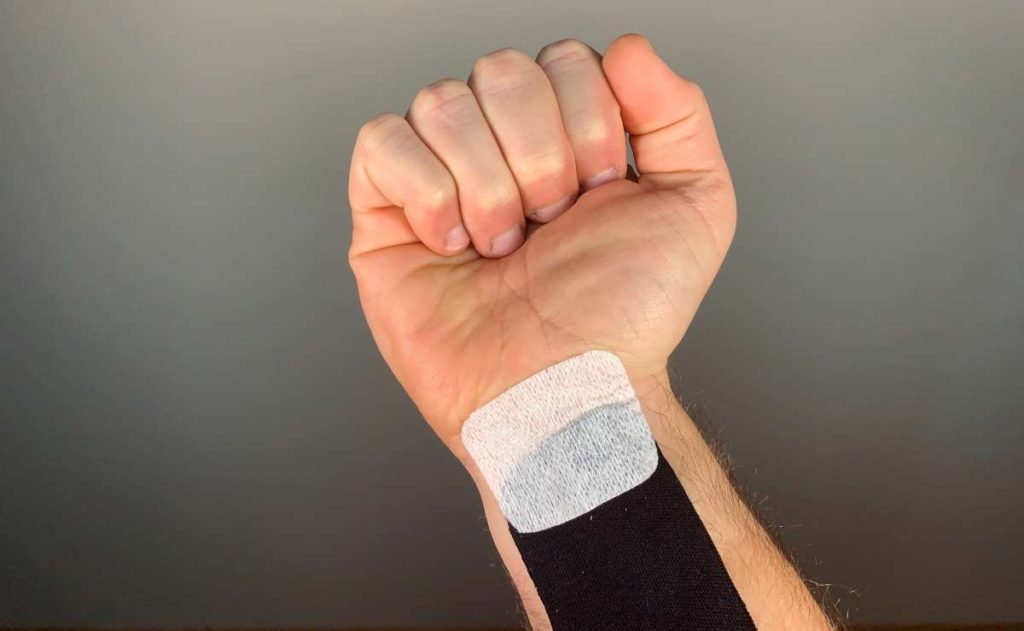
Concluding remarks
Depending on where and why you’re applying Kinesio tape to your body, there are lots of great steps you can take to make sure that it sticks as much as your need it to. Just like there’s no single, best way to apply Kinesio tape, there’s no one, single best way to maximize its effect of sticking to your skin.
Don’t be afraid to try any and/or all of the tips mentioned within this article. Ultimately, you need to find what’s best for you. Every injury, body part and taping application may need different types and amounts of reinforcement. But at the end of the day, as long as you find a way to make the tape stick while making it feel comfortable while simultaneously avoiding skin irritation, you’ll have peace of mind in knowing that you won’t have to worry about taking the tape off for an extended period of time.

Hi! I’m Jim Wittstrom, PT, DPT, CSCS, Pn1.
I am a physical therapist who is passionate about all things pertaining to strength & conditioning, human movement, injury prevention and rehabilitation. I created StrengthResurgence.com in order to help others become stronger and healthier. I also love helping aspiring students and therapists fulfill their dreams of becoming successful in school and within their clinical PT practice. Thanks for checking out my site!

